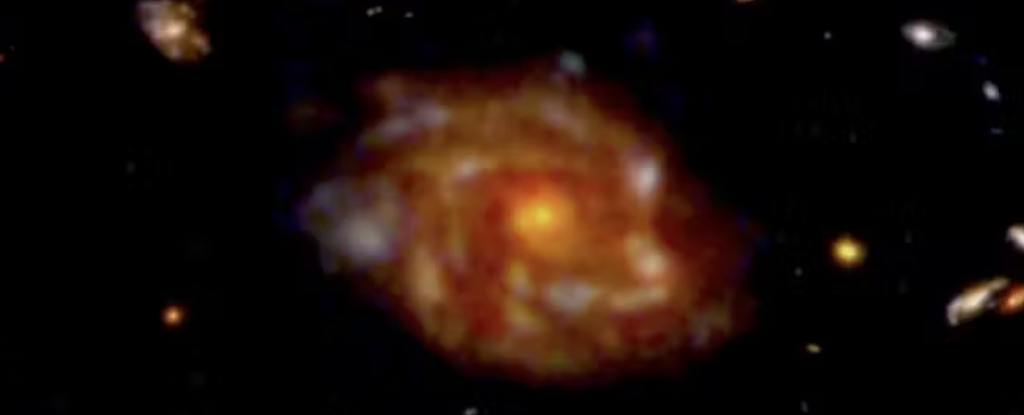Expanding Universe
From our point of view the Universe is expanding in every direction from us. What is the reason for this? By observing a Galaxy it is clear that the closer to the centre of the galaxy the slower the objects in the galaxy are approaching the centre. The further out from the centre, objects are moving faster.
As objects approach the centre of the Black Hole time slows and all motion of the galaxy's objects slows. In fact the last 6 inches to approach the centre of the Black Hole would take millions of years to accomplish. Hence as time approaches zero, light no longer can exist, which is the reason for the non existing light at the centre of a galaxy, as Black Holes lack light.
This all runs contrary to Einstein's theory that Black Holes are made up of infinity mass. If this was true objects in a galaxy would be accelerating towards the centre of the Black Hole.
What is observed is the outer limits of the Universe are traveling further and expanding faster from a point in the universe.
The Universe is really a giant galaxy, only massive times larger.
Astrophysics view the newest galaxies and star clusters as those nearest the Big Bang, while those furthest out are seen as older galaxies.
Is this true? The galaxies nearest the centre of the Universe are identified by their red shift, but this does not denote their age but denotes their position. The same is true for those further out. The red shift indicates their position in the Universe, which are the furthest out in the Universe.
This fact is now being demonstrated by recent new understandings of deep space photos from the Webb telescope.
The Big Wheel galaxy contradicts the Big Bang theory, because it's far too developed to be a young galaxy. This would indicate the Big Bang theory is wrong. To age these galaxies to determine their distance from from the Big Bang is bad science. This galaxy's development is no different than any major galaxy. It's position in the Universe though is quite different. This galaxy is nearest the centre of the Universe, where time and space slows.
The failure of the Big Bang theory now jeopardizers 2 of the worlds biggest theories. Evolution and the Bibles view of creation.
There is no beginning or end to the Universe, but there is a centre. Light, time and motion all slow approaching the centre. These alterations to time and space alter those galaxies closest to the centre. This has been clearly proven by the study of galaxies. The close objects approach the centre of a galaxy motion, light, motion and time all slow, so the same also occurs with the Universe. This parallel thought allows us to explain the anomalies found by the Webb telescope.
As time approaches zero, light no longer exists, and time then does a loop. The Universe is not restrained by time. As time is conserved.
Our inability to define the centre is because the Universe is rotated 90 degrees from our POV.


